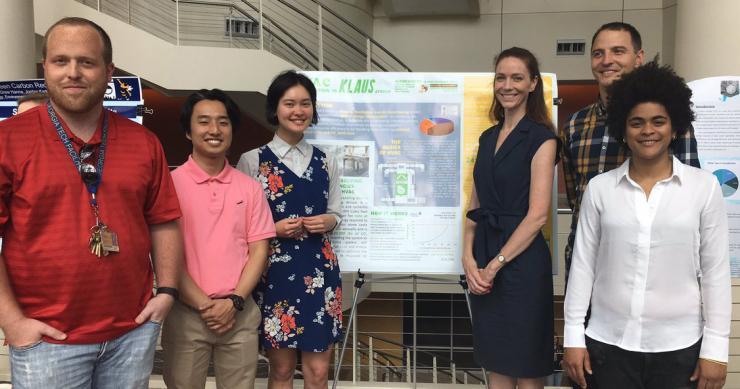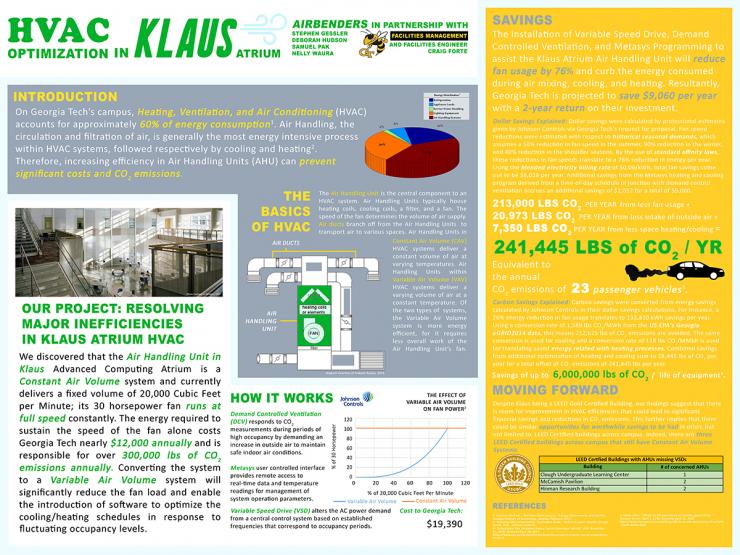BBISS Fellow, Cobb to Take Winning Carbon Challenge Team to Washington
May 19, 2017 — <p>, Communications Manager, BBISS</p>

The winning project in the 2017 Carbon Reduction Challenge class will avoid the emission of six million pounds of carbon dioxide, or about 2,720 metric tons. This is not only a record in the ten year history of the class, but amounts to more carbon emissions avoided than all the previous year’s projects combined. A group of four students worked with Georgia Tech Facilities Engineer Craig Forte to optimize the performance of the air handler in the lobby of the Klaus Advanced Computing Building. This project will not only further reduce the carbon footprint of the LEED Gold certified building, but will save Georgia Tech $9,600 per year in energy costs, or $240,000 over the 25 year life of the system.
BBISS Fellow, and Earth and Atmospheric Science Professor Kim Cobb has been teaching EAS 3110: Energy, the Environment, and Society since 2007. It is designed as a project-based competition where student groups are challenged to partner with organizations and businesses to sequester, or avoid the emission of at least 20,000 pounds of carbon over the life of the project. Since students work with real organizations, their proposals must make financial as well as ecological sense. “We are thankful to Georgia Tech and Craig Forte for working with us on our project and ultimately enacting it,” says team member Samuel Pak. “Economics and the environment are usually thought to be at odds with one another, but our Carbon Reduction Challenge project shows otherwise.”
Students, Stephen Gessler, Deborah Hudson, Samuel Pak, and Nelly Waura discovered that the air handler in the atrium of the Klaus building was designed to operate at full capacity at all times. They proposed an upgrade to the system to include a Demand Controlled Ventilation (DCV) sensor and a Variable Speed Drive (VSD). The DCV measures the carbon dioxide levels in the atrium of the building, and tells the VSD to speed up or slow down the air handler’s fan to maintain air quality. Carbon dioxide levels are an indicator of the occupancy of the space. The more people breathing out carbon dioxide in the atrium, the faster the system runs to keep levels below a certain threshold.
The upgrade to the Klaus building’s systems cost $19,390 to install, but will pay for itself in energy savings in two years, and continue to save money, energy, and carbon for the life of the system. “This student project demonstrates the size of the low hanging fruit when we consider how to reduce our energy demand without compromising on comfort, while saving thousands and thousands of dollars,” says Cobb. “A win-win-win that shows we can reduce greenhouse gas emissions while growing our economy.” With the help of funds from the BBISS Fellows program, Cobb will take the winning team members to Washington, D.C. to present their project to Georgia lawmakers.

, Communications Manager, BBISS




